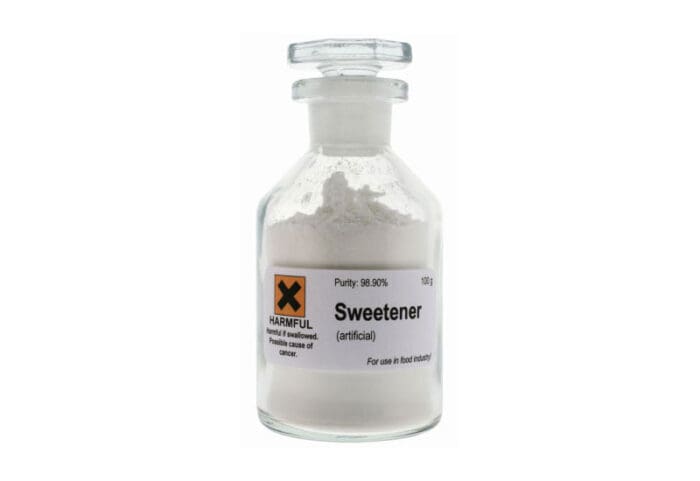
Written By: Owennie Lee, RD
Title: Registered Dietitian
Alumni: University of British Columbia
Last Updated on:

These days, many of us have an ingredient or two that we try to avoid when choosing packaged foods. But it is not always as straightforward as we might hope, as there may be many names for the same food additive. We have collected some common ones here to help you sort through the maze.

Table of Contents
Sugar is sugar, isn’t it? If only it were that simple. Sugar can also appear on the ingredient list under a few other aliases that do not involve the word “sugar”:
High Fructose Corn Syrup (HFCS) is commonly used in place of sugar in processed foods in the USA, especially in sweetened beverages such as sodas. However, don’t be surprised if you also find HFCS in bread or processed meats, such as sausages. If you are like First Lady Michelle Obama, who scans ingredients lists to avoid High Fructose Corn Syrup, you might also want to know that HFCS is called “glucose-fructose” (or glucose/fructose) in Canada. In addition, the Corn Refiners Association (CRA) is considering changing the name of “high fructose corn syrup” to “corn sugar,” which may confuse the general public even more.
Most people know right away that aspartame is an artificial sweetener. If you are trying to skip another sweetener, Splenda®, make sure you also watch for sucralose on the ingredients list, as Splenda® is actually the trade name for sucralose.
The synthetic yellow lemon azo dye tartrazine is also known as FD&C Yellow No. 5 in the United States, where it has been approved for use in foods since 1969. In Canada, Yellow No. 5 is listed as “tartrazine.” Other names of tartrazine that you need to be aware of are E102 and C.I. 19140.
In his book Fast Food Nation: The Dark Side of the All-American Meal, Eric Schlosser notes that one “artificial flavor” listed on a label can comprise more than 50 ingredients. The Canadian Food and Drug Regulations outline that artificial flavors used in Canadian products can contain a sweetening agent, food color, and designated classes of preservatives. They can also contain, among other things, benzyl alcohol, ethyl acetate, isopropyl alcohol, and edible vegetable oil. The FDA does not require that flavor companies disclose ingredients as long as all the ingredients are considered “Generally Regarded as Safe.” This policy allows flavor companies to protect their secret flavor formulas. That’s a lot of unknown stuff masked under one simple name!
Be label-smart and make yourself familiar with tricky food ingredient vocab! This may save you from unknowingly swallowing ingredients that you are trying to avoid.
Alumni: University of British Columbia – Owennie is a registered dietitian with a soft spot for chocolate and coffee. She is a believer in balance and moderation, and is committed to keeping healthy eating enjoyable and fun. Owennie received her dietetics training in Vancouver, and is a member of Dietitians of Canada and the College of Dietitians of British Columbia. She has experience in a wide variety of settings, such as clinical nutrition, long-term care and outpatient counseling. Owennie has also worked for a community nutrition hotline and participated regularly as a guest radio host, where she enjoyed sharing her passion and knowledge about food and nutrition with people.